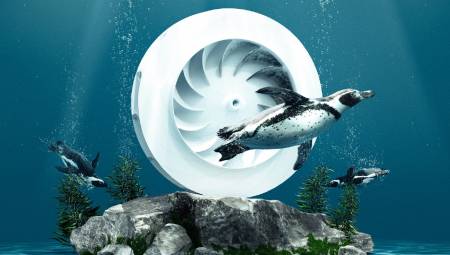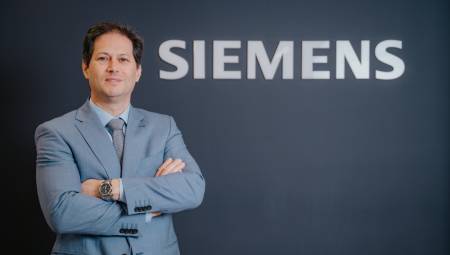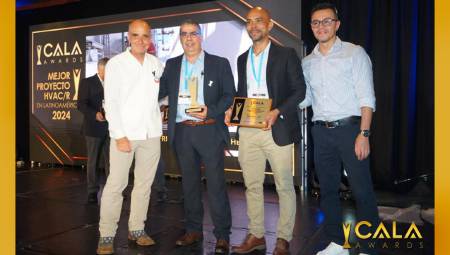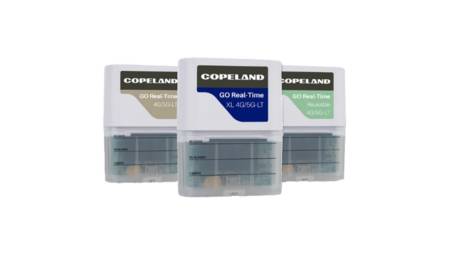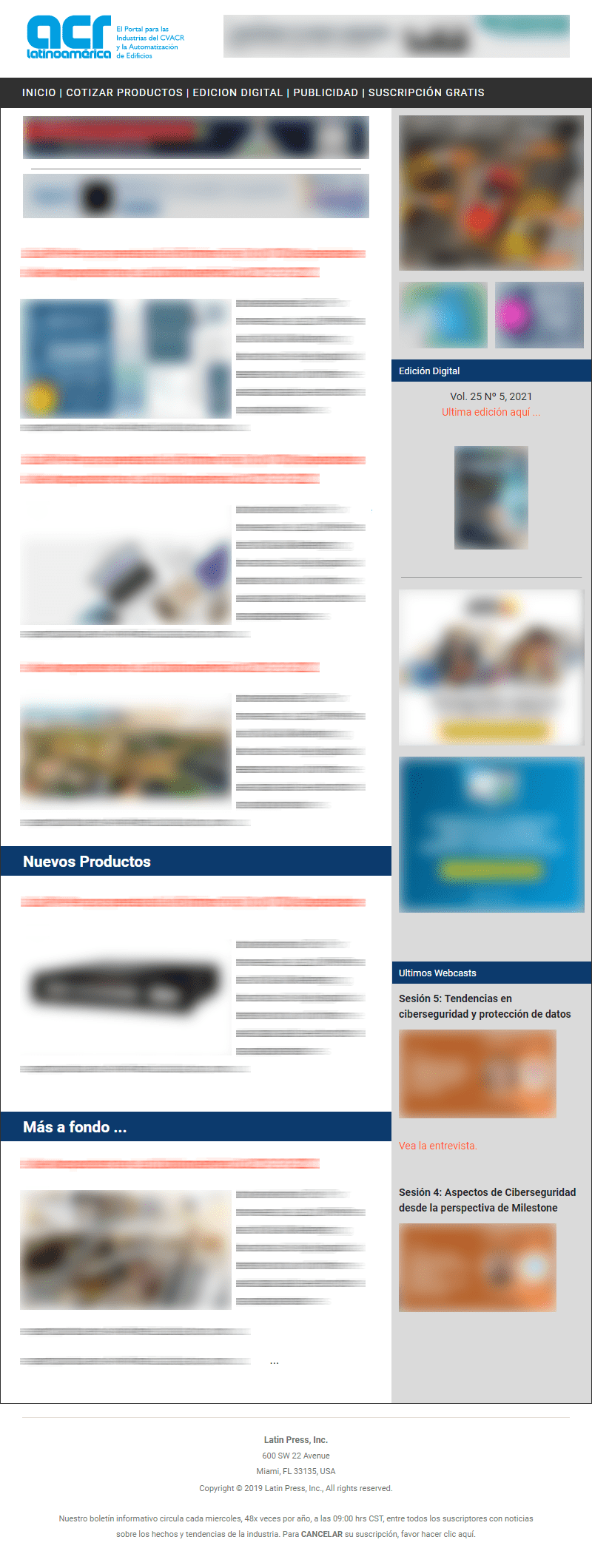 There are many sizes, capacities and uses of cooling towers, but what care must be taken?, what are the most frequent damages and what causes them?, what new developments have been presented? Industry experts solve these questions.
There are many sizes, capacities and uses of cooling towers, but what care must be taken?, what are the most frequent damages and what causes them?, what new developments have been presented? Industry experts solve these questions.
by María Cecilia Hernández Ocampo
In almost all industrial processes where it is necessary to recover water there will be a cooling tower, and here fit the food, chemical, oil, mining, plastic and paper production industries, among many others.
To better understand its operation, Javier Morales, application engineer of Industrias Protón Ltda. explains that these are equipment designed and calculated to efficiently and economically remove the waste heat generated in all types of industrial processes.
"It works with a closed circuit of water on which, when entering the equipment, an air current is passed. In this contact, a transfer between heat and mass is made and finally, the air is expelled to the outside so that it does not contaminate," says Morales.
To complement this definition, Alfredo Sotolongo, vice president of Protec Cooling Towers, Inc., points out that a cooling tower is an equipment used to cool a fluid by means of heat and mass transfer, which is understood as evaporation.
These devices are, in essence, a heat exchanger between water and air, in which the fluids make direct contact.
As explained by engineer Morales, these systems consist of several parts:
- Hot water distribution system - irrigation tree.
- Medium of surface increase and contact time - filling.
- Artifice to generate fresh air circulation - motor / fan assembly.
- Cold water collection system - swimming pool.
One for every need
There are many ways to classify cooling towers.
According to the shot: mechanical shooting, these are the most used in the market; forced draft, which have a fan on the lower side; of induced draft, with fan on top.
According to the flow: cross-flow, which has vertical filling with respect to the floor of the tower and allows the crossing of air and water flows; and counterflow, which have filling parallel to the floor of the tower and the air and water flows are countercurrent.
Depending on the type of filler: film filler, which is used for clean waters with little content of total suspended solids; and splash-type filler, recommended for dirty water containing a large amount of total suspended solids.
However, other specialists summarize the classification of these equipment depending on the general dynamics of the industry. Fabián Escalante, general manager of Frimont explains that "in general there are two types of cooling towers, the conventional or open and the closed circuit".
The first is the traditional one and is the one used in 95% of industries. In this type of tower, the properties of water are used as a coolant to lower the temperature. The second is used to cool or treat, by means of tower water, a water or a fluid that should not be contaminated.
The cost of a cooling tower depends on multiple factors: whether it is certified, the consumption of the engine, the material of manufacture, the quality of the materials and their useful life, the cooling flow rate and the operating conditions.
According to Ernesto Castro, head of design and projects at TecnoFiber Chile, regarding the costs that these equipment may have, the figure is variable. "We can think of a small tower that can cost between $800 and $1,000, up to large teams of one to two million dollars and up."
Castro emphasizes that it must be taken into account that a small tower can work with ten cubic meters per hour, and a large tower can operate with 5,000 to 8,000 cubic meters per hour. "The difference is quite considerable," he says.
Small advances enormous advantages
It could be said that the new developments in what has to do with cooling towers have not been very dazzling, they are rather subtle changes that achieve great benefits and advantages.
In that sense, says Sotolongo, advances such as minimizing air resistance through the tower have allowed the use of lower power motors for the same capacity.
Likewise, Ernesto Castro assures that although there are not many changes in the cooling tower market since they began in the 40s, what has evolved a lot are their internal components.
Castro mentions that these 'new technologies' have to do with "improvements in the wet surface used by the towers, which are contact fillers; and in mechanical ventilation systems, where we have tried to design less noisy towers, which have a higher performance but with a smaller occupied area".
In addition, work has been done to make water distribution systems much better, more effective and with more compact contact fillers, resulting in greater performance.
The TecnoFiber Chile expert specifies that there are also new developments in propellers whose blades have an aerodynamic profile, which allow greater performance in terms of air flows but are as quiet as possible.
For his part, Fabián Escalante comments that there have been advances in the use of different materials, "we have chosen to use polypropylene in the evaporative filling (contact filling), which is the component used to make the air-water exchange. This material, which is the same as disposable cups, is not normally used because it has a high cost, but the great advantage is the service life and even the working temperatures it can face."
How to protect computers
For many reasons a cooling tower can lose its functionality or break down, one of the most important is the lack of adequate preventive maintenance.
"This is a problem that occurs in all Latin American industries; in Europe or in the United States it does not happen. As it is a relatively simple equipment, the user forgets and leaves the equipment operating 365 days a year, continuously and does not worry about doing maintenance that is so simple, "warns Castro.
This opinion is shared by Alfredo Sotolongo, who assures that preventive maintenance is vital, not only for its mechanical and electrical components but also for water treatment. If the water is not treated properly this is reflected in the filling of the tower and in the heat exchanger, as the scale reduces the capacity considerably.
Experts recommend that once or twice a year deep cleanings are carried out, because when working with water you have a high concentration of algae or suspended solids and organic matter that accumulates in the evaporative filler, which causes it to break or detach.
However, the Manager of Frimont points out that traditional fillers cannot be washed, since the vast majority are made of high-impact polyethylene, a material that over time, the sun and temperature conditions degrades.
"If it is also washed with a hydro washing machine or with pressure washing, it can be disassembled. For that reason, the ideal is to completely replace the contact filler, if it has lost its operating conditions, "advises Fabián Escalante.
It is essential to carry out a water treatment, reduce the water hardness index so that the fillings are not contaminated, verify the operation of motors and fans, make a complete check of the equipment either once a month, every three months or every six months depending on the quality of the water.
"This procedure is usually not done by anyone, usually users wait for the equipment to fail and for it to be evident that the system is not working, only then is an intervention made. But sometimes it is too late because the cost of corrective maintenance is much higher than the cost of preventive maintenance," emphasizes Enrique Castro.






